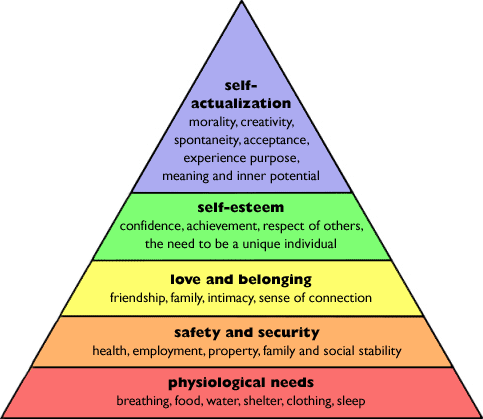

Narrative theories
Narrative is the way that the different parts of a story are organised to make the story meaningful.
Tzetan Todorv's narrative theory

Tzvetan Todorov's narrative theory suggests that all narratives follow a three part structure where they begin with equilibrium, where everything is balanced, progress as something comes along to disrupt that equilibrium, and finally reach a resolution, when equilibrium is restored.
These are the steps for all traditional stories:
1. Equilibrium (everything is as it should be)
2. Disruption (by an event)
3. Recognition of disruption
4. Attempts to repair disruption
5. Return to equilibrium
Vladimir Propp's theory
Vladimir Propp was a Soviet folklorist who is known for coming up with 7 broad characters that can be found in every story after analysis 100 tales. Those characters include the hero, the dispatcher, the helper, the villain, the princess and her father, the false hero and the donor.

Maslow's hierarchy of needs

Maslow proposes 5 types of needs that should be fulfilled to satisfy the people. Some of these needs are essential such as food or shelter. However if the person has the basic needs they are likely to still not feel fulfilled which is where media comes in. Things like happiness can be achieved through watching a film with a happy ending or sadness through watching a music video about sensitive topics such as a loss.
Music videos like the one for Lazarus from David Bowie are likely to make the audience feel sadness and give them sense of connection since the music video was released just before the artist has passed away.
Claude Levi-strauss - binary opposites

A binary opposition is a pair of related terms that are opposite in meaning. This can often be seen in horror or action films with good vs bad characters.